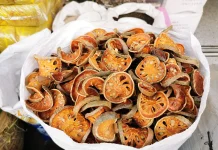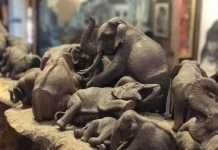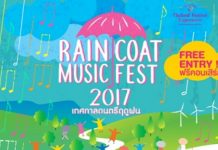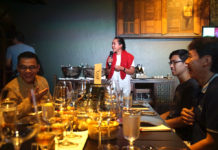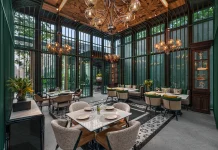Nestled in Maha Sarakham province, Northeast Thailand, the unassuming ordination hall of Wat Yang Thuang may resemble a simple rice barn upon first glance. However, a closer inspection of its walls, adorned with unique Buddhist art, transforms the ordinary into an extraordinary experience. These murals, depicted on the “sim” or ordination hall, provide a vivid portrayal of the Isaan people’s soul.
In the northeast dialect, the ordination hall is known as the “sim.” For visitors, its exterior walls unfold like a captivating slide show, offering a window into Isaan’s rich culture. The murals tell tales of Lord Buddha seated beneath a banyan tree, a legendary prince leading his men into battle against a demon king, and even the mischievous antics of two young men exposing their buttocks to draw attention. These vibrant paintings convey the essence of the Isaan region.

Wittaya Wutthaisong, a lecturer in art history at Khon Kaen University, aptly describes the “sim” as the soul of Isaan. It stands as a testament to the simplicity, beauty, honesty, and faithfulness that define the Isaan people. Visitors might also add “mischievous,” “tongue-in-cheek,” and “playful” to the list of adjectives describing the Isaan “sim” when witnessing depictions of Isaan men charmingly interacting with women in these murals.
Similar to the Buddhist ordination hall or Ubosot, the “sim” plays a pivotal role as a centrepiece of the temple, hosting significant rituals such as ordination ceremonies conducted by the resident monks. This closed structure, constructed with brick, limestone plaster, and a sturdy foundation, features Naga-shaped railings on its east-facing staircase. The hall is encircled by small sandstone boundaries and boasts a wooden, three-tiered roof with a wing-like extension, supported by ornate columns. Its inner and outer walls are coated with white stucco and adorned with mural paintings.
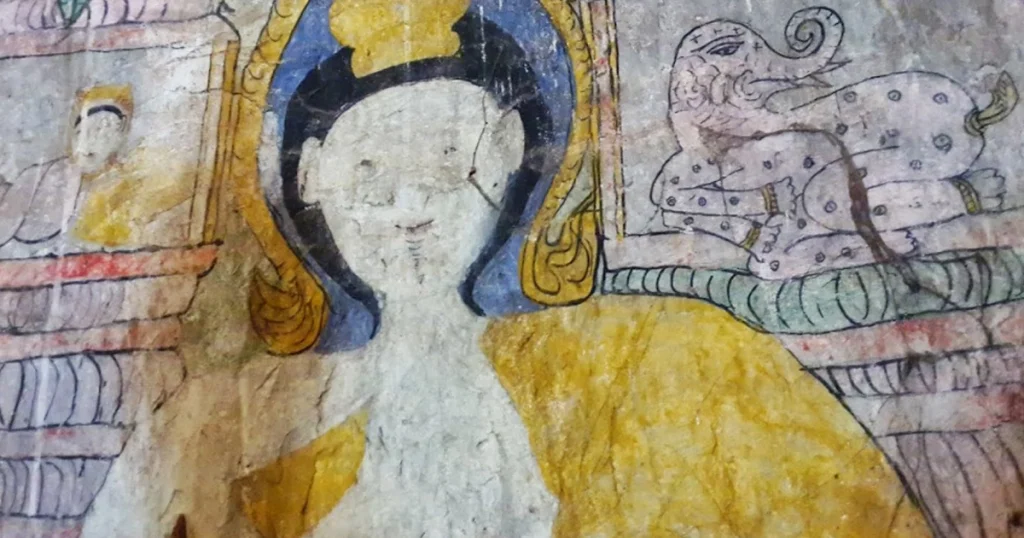
The mural paintings, referred to as “hub taem” in the Lao dialect, exhibit distinctive characteristics that are exclusive to Northeast Thailand’s folk-art style. While many murals depict the Vessantara Jataka, narrating the Buddha’s past life as Prince Vessandara, who displayed the virtue of perfect charity, other walls tell Isaan folk tales like that of “Sin Chai,” a local folklore hero who led troops against a demon king. In a departure from the norm, local artists occasionally painted scenes of everyday Isaan life, including those with sensual elements.

DESTINATION
Phetchaburi: A small town with a bold flavour
The seaside province of Phetchaburi, located 175 kilometers southwest of Bangkok, is already well-known for traditional art, heritage buildings, and natural wonders – but food culture is its newest claim to fame.
>> Read More
The colour palette of these murals predominantly includes blue, white, yellow, and black, owing to the limited resources available to local artists. White was crafted from clam shells, while indigo plants provided the blue hues. Bamboo-made brushes were used for painting, resulting in strokes that carry the rustic charm of Isaan’s original folk art. The murals often feature rough pencil outlines, occasionally visible beneath the layers of colour, with powdered colours mixed using homemade glue.

What sets the “sim” apart from its central Thai counterparts is the mural art on its exterior walls. This distinction arises from the Isaan tradition of having residents sit outside the ordination hall during ceremonies. Given its relatively small size, only a few men can sit inside, and women are typically prohibited from entering the chapel. The mural stories on the outer walls serve to entertain and comfort those waiting outside, with some embracing sensuality, including graphic poses and exposed bodies. These images are distinct from what is typically seen in famous Thai temples, showcasing the Isaan people’s fearless embrace of sensuality on the “sim” walls.
In contrast to the sensuality on the exterior walls, the murals inside maintain a sense of decency and morality while retaining their uniqueness. Painted in vivid yellow, they depict Lord Buddha reclining on the wall, accompanied by two monks sheltering their master with a massive umbrella. The contrast between the outer and inner murals highlights the multifaceted nature of Isaan’s artistic expressions.

Unfortunately, many older “sim” structures have fallen into disrepair over the years, with some being replaced by modern ordination halls in a more standard design. These hidden gems go unnoticed by the general public, drawing only the attention of art history students and academics. The call to dust off and appreciate Isaan’s artistic legacy is more pressing than ever, to ensure the continued celebration of this cultural treasure.

AIR TRAVEL
Suvarnabhumi: SAT-1 Terminal Set for a Soft Launch
Suvarnabhumi Airport is all set to unveil its new SAT-1 satellite terminal, marking a significant expansion of its passenger capacity from 45 million to 60 million annually.
>> READ MORE
IF YOU GO
While visiting Northeast Thailand, consider exploring these temples and their “sim” structures to witness the unique artistic legacy that defines the soul of Isaan.
– Wat Chaisri, Khon Kaen
– Wat Udompracharat, Kalasin
– Wat Photharam, Maha Sarakham
– Wat Palalai, Maha Sarakham
– Wat Yang Thuang, Maha Sarakham
– Wat Baan Lani, Khon Kaen
– Wat Sra Thong, Khon Kaen


